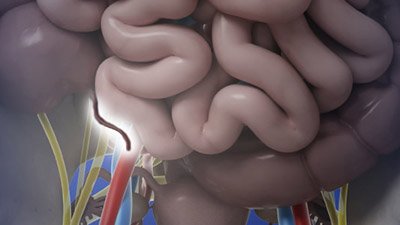
Are Wisdom Teeth Evidence for Evolution?
Most people know wisdom teeth as those back molars that have to be taken out during high school or college. Whether you happen to be one of the few blessed people that never got any, whether they came in straight or whether you had them extracted, those old enough can all relate to them on some level. Personally, mine came in straight, and I never had any problems, but I have removed dozens of wisdom teeth on patients.
Why do we humans have so many problems with wisdom teeth? And does this imply a poor design by the Creator? In mainstream scientific thinking, wisdom teeth in humans are regarded as nothing more than unnecessary, evolutionary leftovers, useless remnants of mutation and natural selection. The term vestigial organs is a term commonly applied to wisdom teeth, which, in a subtle way, connotes these evolutionary sentiments. In a 2016 Scientific American article, the argument is stated like this:
[V]estigial structures are signs of evolutionary history. The Cretaceous snake Pachyrhachis problematicus had small hind limbs, which are gone in most of today’s snakes. Modern whales retain a tiny pelvis for hind legs that existed in their land-mammal ancestors. . . . And, of course, humans are replete with useless vestigial structures—a distinctive sign of our evolutionary ancestry—such as wisdom teeth, male nipples, body hair, the appendix and the coccyx.1
As can be plainly seen, wisdom teeth are still thought of and touted as vestigial structures and as evidence for evolution. But is this actually the case?
Getting to the Root of the Problem
Humans having problems with space for wisdom teeth and/or wisdom tooth impaction is a recent phenomenon, having its beginnings around the Industrial Revolution in the 1700–1800s. Prior to this, every indication is that there were few to no issues with wisdom teeth.2 Various theories have attempted to explain this fact. However, the most satisfactory and easily shown explanation is that many of the issues with wisdom teeth can be traced back to the human diet and the utilization of teeth in preindustrial populations.
Many of the issues with wisdom teeth can be traced back to the human diet and the utilization of teeth in preindustrial populations.
Prior to the 1700s, the human diet was generally much coarser; consequently, people experienced an increase in tooth wear, or attrition.3 Attrition causes a reduction in the height of the crown, or top of the tooth. If this reduction progresses far enough, it actually creates more space in the dental arch, space that can allow for wisdom teeth to erupt normally and function like any other molar. Humans in preindustrial times showed this pattern of tooth wear and, in almost every case, had erupted wisdom teeth with no visible signs of pathology.4 In addition, when an individual eats a diet composed of much tougher, abrasive material, the bones of the jaws will become larger and more robust. This happens due to the increased forces placed on the bone by the masticatory (or chewing) muscles, both during jaw development and over an individual’s lifespan. The attrition of the teeth and the resultant growth and development of the jaws both combine to create a larger dental space for all the molars, making wisdom teeth not only useful and advantageous, but also necessary for individuals to withstand the harsh demands placed upon the dental system in preindustrial times. As a side note, wisdom teeth are advantageous not only for chewing and grinding food, but also for being used as a tool (e.g., tearing, grasping, cutting) by many humans in times past and still today.
Chew on This
We observe the traits of attrition and larger jaws not only in people who lived prior to the 18th century, but also in certain modern subpopulations that still depend on a nonmodern diet for their everyday sustenance. In these people groups, many times there is also a strong correlation with functional wisdom teeth and lessening of impaction. For example, researchers found that rural Nigerians had a much lower impaction rate of their wisdom teeth (1.1%) than their urban counterparts (10.7%), while noting the “fibrous diet” and “greatly pronounced attrition observed in rural Nigerians.”5
Furthermore, studies on Australian aboriginal people groups with processed and nonprocessed food sources found that, in those individuals taking in the nonprocessed food, the resulting heavy attrition and masticatory forces may be able to alleviate third molar impaction.6 So we can see that humans, when utilizing nonmodern nutrition, generally have good use of their wisdom teeth and avoid many of the problems that plague the partakers of a soft, modern diet.
The wisdom tooth problem seems to be grossly overstated.
Even in contemporary people who have generally smaller jaws and less wear, the wisdom tooth problem seems to be grossly overstated. Although approximately 10 million wisdom teeth are extracted every year in the United States alone,7 in many cases wisdom teeth are removed prophylactically, which means that they are taken out to prevent any future pathologic condition from developing. Friedman states that “at least two thirds of these extractions, associated costs, and injuries are unnecessary.”8 In fact, it is estimated that only around 12% of impacted wisdom teeth are associated with pathological conditions such as cyst and tumors.9 And along with wisdom tooth extractions comes some inherent risk involved, albeit low risk, of swelling, hemorrhage, TMJ injury, temporary/permanent paresthesia (numbness of the lip, tongue, or cheek), and jaw fractures, to name a few. So, while many wisdom teeth do indeed have to be extracted for legitimate reasons, the problem is not as immense as the number of extractions would suggest.
An Open and Shut Case
In conclusion, it has been shown that preindustrial (and some modern) populations with a more primitive diet did have functional wisdom teeth and that a processed regimen of food and the lessening of chewing forces is largely responsible for the decrease in attrition and reduction of jaw size. The dental system is thus designed to endure heavy use with the most abrasive of foods, which a God full of love, foresight, and careful provision for his creatures would have logically incorporated into their design. Health-care providers should take every precaution to protect these teeth and avoid taking the approach that they are universally harmful and useless. Wisdom teeth are sturdy, practical structures with a specific and useful purpose. That impaction/disorders are increasingly frequent in today’s world implies nothing about the supposed evolution of humans from primates or a supposed poor design. Wisdom teeth are certainly not vestigial organs. You would be wise to have that idea extracted from your head.
Footnotes
- M. Shermer, H. Hall, R. Pierrehumbert, P. Offit, and S. Shostak, “5 Things We Know To Be True,” Scientific American 315 (2016), 46–53, doi:10.1038/scientificamerican1116-46; emphasis added.
- N. Von Cramon-Taubadel, “Global Human Mandibular Variation Reflects Differences in Agricultural and Hunter-Gatherer Subsistence Strategies” PNAS 108, no. 49 (December 2011): 19546–19551, doi:10.1073/pnas.1113050108; Anita Sengupta, David K. Whittaker, Geraldine Barber, Juliet Rogers, and Jonathan H. Musgrave, “The Effects of Dental Wear on Third Molar Eruption and on the Curve of Spee in Human Archaeological Dentitions,” Archives of Oral Biology 44, no. 11 (1999): 925–934, doi:10.1016/S0003-9969(99)00095-3.
- See Von Cramon-Taubadel, “Global Human Mandibular Variation Reflects Differences in Agricultural and Hunter-Gatherer Subsistence Strategies”; and Y. Kaifu, K. Kasai, G. C. Townsend, and L. C. Richards, “Tooth Wear and the ‘Design’ of the Human Dentition: A Perspective from Evolutionary Medicine,” American Journal of Physical Anthropology, 122 (2003): 47–61, doi:10.1002/ajpa.10329.
- See Von Cramon-Taubadel, “Global Human Mandibular Variation Reflects Differences in Agricultural and Hunter-Gatherer Subsistence Strategies;”; Anita Sengupta, David K. Whittaker, Geraldine Barber, Juliet Rogers, and Jonathan H. Musgrave, “The Effects of Dental Wear on Third Molar Eruption and on the Curve of Spee in Human Archaeological Dentitions,” Archives of Oral Biology 44, no. 11 (1999): 925–934, doi:10.1016/S0003-9969(99)00095-3; Kaifu, Kasai, Townsend, and Richards, “Tooth Wear and the ‘Design’ of the Human Dentition”; O. Mockers, M. Aubry, and B. Mafart, “Dental Crowding in a Prehistoric Population,” European Journal of Orthodontics 26, no. 2 (April 2004): 151–156, doi:10.1002/ajpa.10329.
- S. A. Odusanya and I. O. Abayomi, “Third Molar Eruption Among Rural Nigerians,” Oral Surgery, Oral Medicine, and Oral Pathology 71 (1991): 151–154, doi:10.1016/0030-4220(91)90457-N.
- See R. S. Corruccini, “Australian Aboriginal Tooth Succession, Interproximal Attrition, and Begg’s Theory,” American Journal of Orthodontics and Dentofacial Orthopedics 97, no. 4 (1990): 349–357, doi:10.1016/0889-5406(90)70107-N.
- See J. W. Friedman, “The Prophylactic Extraction of Third Molars: A Public Health Hazard,” American Journal of Public Health, 97, no. 9 (2007): 1554–1559, doi:10.2105/AJPH.2006.100271.
- Ibid.
- H. R. Stanley, M. Alattar, W. K. Collett, H. R. Stringfellow, and E. H. Spiegel, “Pathological Sequelae of ‘Neglected’ Impacted Third Molars,” Journal of Oral Pathology 17 (1988): 113–117, doi:10.1111/j.1600-0714.1988.tb01896.x.
Recommended Resources

Answers in Genesis is an apologetics ministry, dedicated to helping Christians defend their faith and proclaim the good news of Jesus Christ.
- Customer Service 800.778.3390
- © 2024 Answers in Genesis



